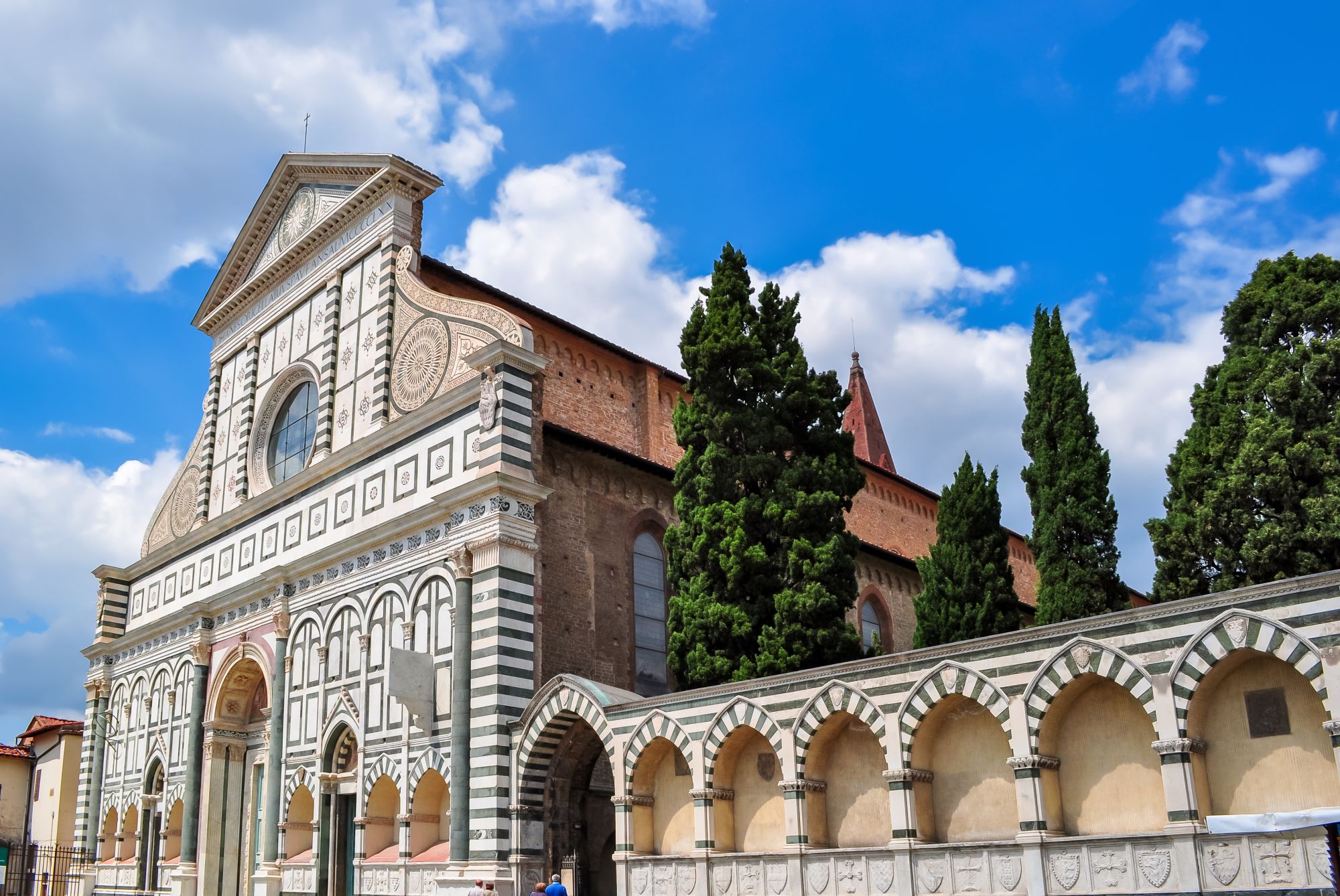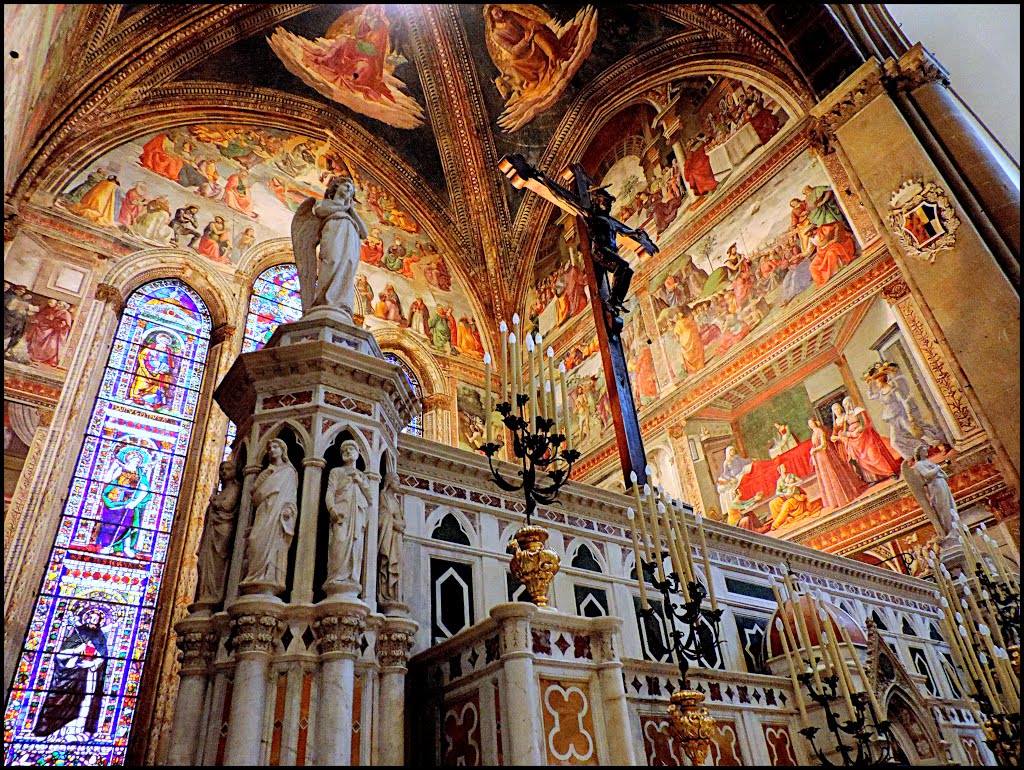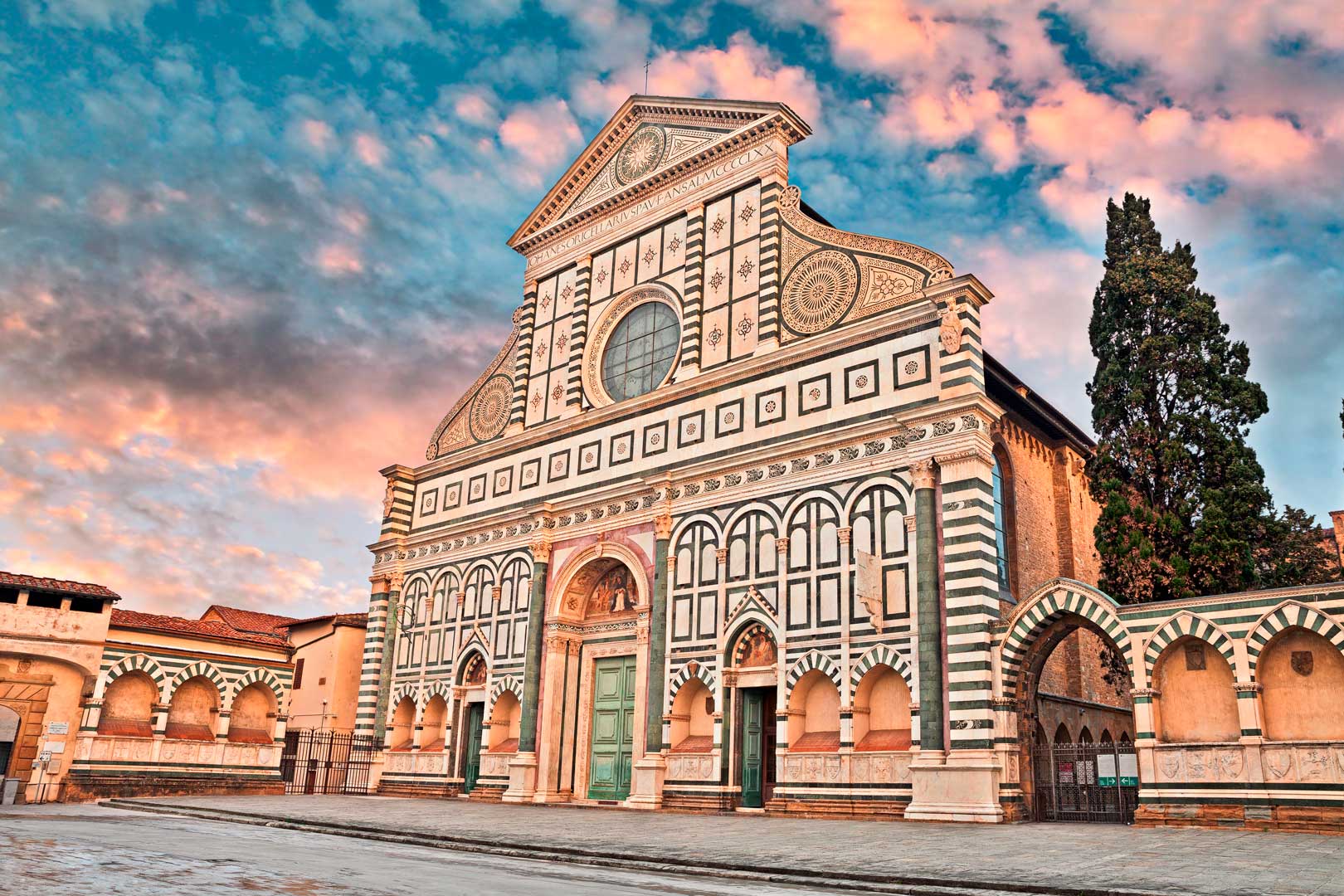
If you arrive in Florence by train, you cannot fail to notice, as soon as you leave the station, a large building. This is the back of the great complex of the Basilica of Santa Maria Novella, inside which ancient works and great masterpieces are preserved.
Visiting the Basilica is almost compulsory for those who want to see Florence and its masterpieces because, inside, you can breathe history and admire the art of the greatest Florentine artists.
In this post, I will tell you what you can see inside the Basilica and what curiosities you should know about Santa Maria Novella.
Basilica of Santa Maria Novella in Florence: works, history and curiosities

The first stone of the Basilica of Santa Maria Novella was laid in 1279, although there was already a sacred building used by the Dominicans on the site of the church.
Throughout the 14th century, the convent was enlarged thanks to the generosity of the Republic and the families of Florence, whose coats of arms can still be seen along the structures of the building.
The building was completed and consecrated in 1420 and the Dominican community had meanwhile become one of the most important in the city and even hosted the Council of Florence in 1439, offering hospitality to papal delegations.
WORKS TO BE SEEN AT SANTA MARIA NOVELLA
The church is accessed through the façade decorated with white and green marble, the upper section of which was built in 1470 to a design by Leon Battista Alberti.
Inside the Basilica of Santa Maria Novella are three naves marked by Gothic pillars. What we see today is the result of a renovation that took place in the 1500s, which reorganised the spaces and allowed the innumerable masterpieces inside to be preserved.
Among the oldest works to be admired inside Santa Maria Novella is the large Cross painted by Giotto. In the left aisle, one can admire Masaccio’s Trinity, and in the Gondi Chapel is the Crucifix by Filippo Brunelleschi.
Moreover, one cannot visit Santa Maria Novella without taking a close look at Leonardo Dati’s tombstone by Lorenzo Ghiberti or Sandro Botticelli’s Nativity.
This church is a real treasure chest of treasures and masterpieces and at every step you will find wonders, such as the Tornabuoni Chapel frescoed by Domenico Ghirlandaio and the Strozzi Chapel by Filippino Lippi.
To visit the Basilica of Santa Maria Novella you need to buy an entrance ticket, which gives you access to all the works and all the rooms in the Church and the nearby Cloisters.

THE MUSEUM OF SANTA MARIA NOVELLA
At the beginning of the 20th century, the Santa Maria Novella Museum was established, which includes the ancient buildings of the Convent, the Refectory and the Cappellone degli Spagnoli.
The Green Cloister, built around the middle of the 14th century and communicating with the basilica via a door and staircase, is so called because the colour green predominates in the pictorial cycle decorating three of the four sides of the cloister. On the walls are narrated the stories of genesis and among these are the famous scenes of the Original Sin and the Universal Deluge painted by Paolo Uccello.
The Cloister of the Dead, on the other hand, had a cemetery function from the time of its construction (between the 13th and 14th centuries). The tomb slabs and frescoes of the chapels built by some Florentine families can still be seen here.
The Cappellone degli Spagnoli, on the other hand, is a room in the convent that was given to the Spanish community in 1506, when Eleonora di Toledo married Duke Cosimo I de’ Medici.
The room is decorated with a cycle of frescoes by the painter Andrea di Buonaiuto celebrating the triumph of the Catholic Church against heresy and the active and contemplative life of the Dominican order.
The convent’s Refectory contains a spectacular wall painting and a large painting of the Last Supper, works created in the 16th century by Alessandro Allori.

